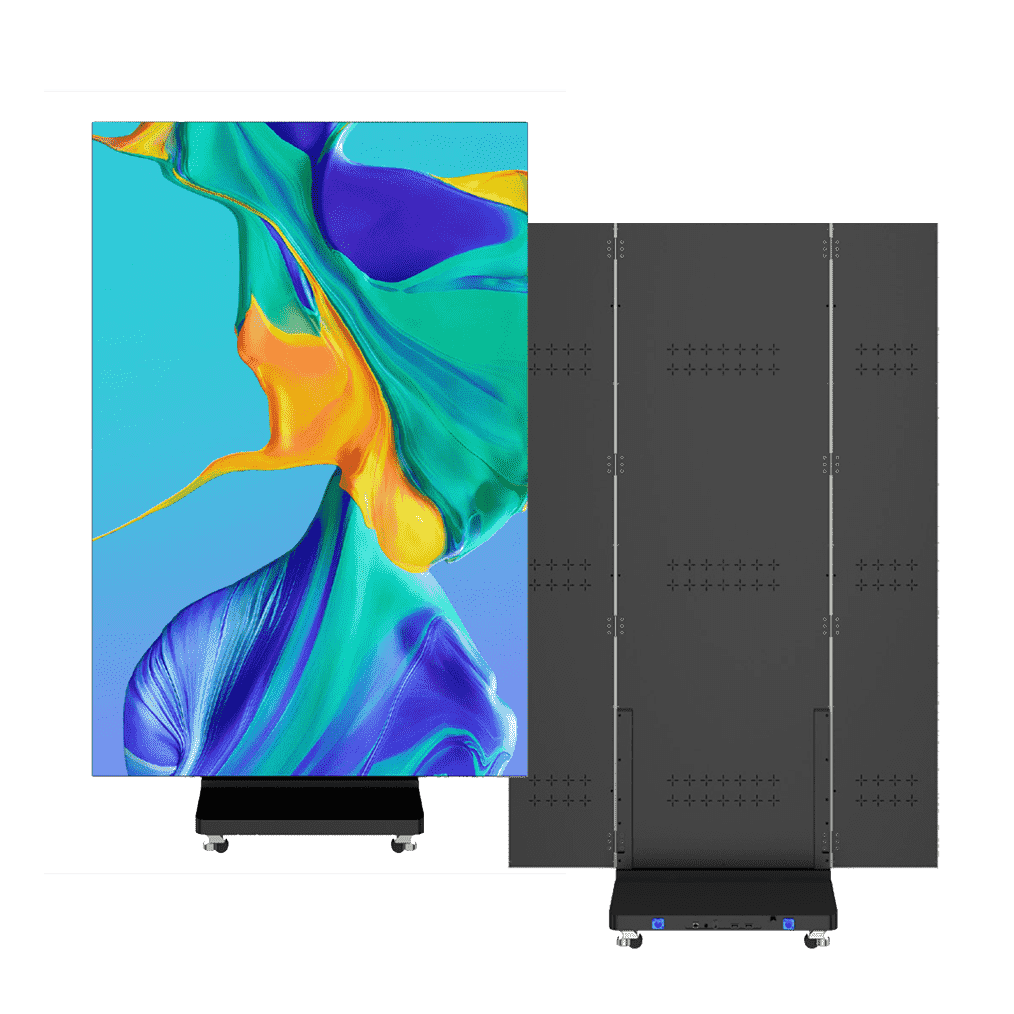In the dynamic field of display technology, transparent LED display screens and regular screens stand out as distinct options, each with unique features tailored to specific needs.
1. Transparency and Visibility
Transparent LED Screens
Transparency is the hallmark of these screens. They are designed to let light pass through, enabling viewers to see behind them while displaying content. This is achieved via specialized LED components, such as side-emitting modules that remain inconspicuous when off. Transparency levels typically range from 60% to 95%, making them ideal for glass curtain walls, where they showcase digital content without obstructing architectural views or natural light.
Regular Screens
Regular screens (LCD, LED-backlit LCD, OLED) are opaque. When off, they form a solid barrier; when on, they generate images by manipulating internal light rather than allowing transmission. For example, LCDs use liquid crystals and a backlight to create pixels, which suits applications like TVs or monitors where background visibility is irrelevant.
2. Display Technology and Image Quality
Transparent LED Screens
These use LEDs arranged in matrices or modules. They offer high brightness, ensuring visibility in well-lit areas, and good color reproduction. However, balancing transparency with pixel density results in larger pixel pitches, making individual pixels noticeable at very close range—less critical for applications with moderate viewing distances.
Regular Screens
Regular screens leverage mature technologies: LCDs deliver high resolution and sharpness, ideal for design or gaming; OLEDs feature self-emissive pixels, offering perfect blacks and high contrast for immersive viewing. They also boast advanced image processing for color accuracy and motion handling.

3. Installation and Structural Requirements
Transparent LED Screens
Lightweight (as low as 16 kg/m² vs. 42 kg/m² for traditional SMD screens), they ease installation on fragile surfaces like glass curtain walls. Their modular, strip-light design allows customization into shapes like cylinders or arcs, with minimal structural support needed.
Regular Screens
Large regular screens require sturdy brackets or frameworks due to their weight. Installation is limited to standard shapes (rectangles, squares), with custom forms demanding costly fabrication. Wall-mounted units often need structural reinforcement.
4. Energy Consumption
Transparent LED Screens
Engineered for efficiency, they use low-power LEDs, crucial for continuous operation in outdoor or building-facade applications. Their transparency allows ambient light utilization, reducing the need for maximum brightness and saving energy.
Regular Screens
Energy use varies: LED-backlit LCDs are more efficient than older CCFL models, but still may consume more than transparent LEDs in similar setups. OLEDs save energy with dark content but use more power for bright, full-screen displays. Large units often need dedicated cooling and electrical systems.
5. Cost
Transparent LED Screens
Higher costs stem from specialized manufacturing (unique LED packaging, circuit designs) and lower production volumes. Prices are declining as demand grows and technology matures.
Regular Screens
Mass-produced regular screens (especially LCDs) benefit from economies of scale, offering lower costs. Even high-end OLEDs are often cheaper than comparable transparent LED screens.
6. Applications
Transparent LED Screens
-
Architecture: Enhance glass facades with dynamic content while preserving views.
-
Retail: Display promotions in store windows without hiding merchandise.
-
Events: Create unique stage backdrops or installations with transparent visuals.
Regular Screens
-
Home Use: TVs and monitors for entertainment and work.
-
Offices: Monitors and projectors for meetings and tasks.
-
Indoor Signage: Wayfinding and ads in malls, airports, etc.
In summary, transparent LED screens excel in transparency and flexible installation, while regular screens offer superior resolution and cost-effectiveness. Their unique strengths ensure they cater to distinct applications in our digital landscape.


